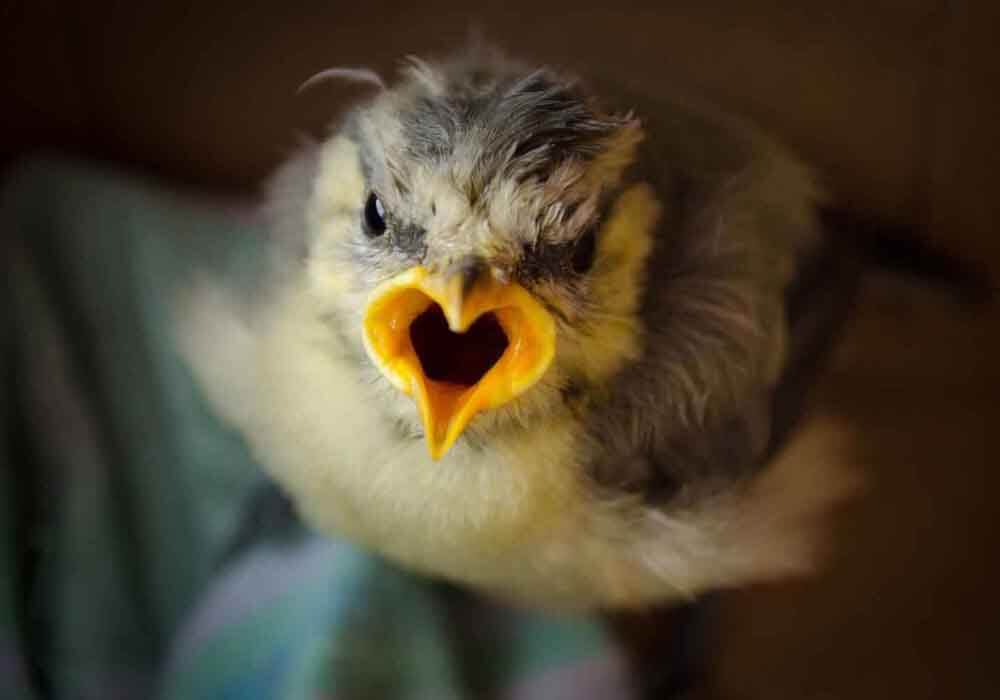How Do Birds Eat Bees?
How Do They Avoid Getting Stung?...or Do They?
It may or may not come as a surprise that bees form a central part of many birds’ diets. However, many bees have stingers to protect themselves from predators and will use these biological weapons if necessary. This may have you wondering, how do birds eat bees?
Birds eat bees by grabbing them with their beaks while in flight. They also sometimes swoop down on a stationary bee and snatch it. The process is usually very quick and doesn’t give the bee much time to react by stinging the bird.
Bee-eating birds live in various locations around the globe, but they’re found mainly in the African and Asian continents. The remainder of this article will talk about the different bird species that eat bees as well as how they can consume them safely and why bees are such an integral part of their diets. Let’s get started!

Five Common Questions About Bee-Eater Birds
Bee-eating birds are incredible creatures that use speed, accuracy, and precision to snatch bees from mid-air, kill them and eat them. If they spot a stationary bee (on a tree branch, for example), they will swoop down, grab the bee, and eat it.
Although they may be hard to spot, bee-eating birds are a unique species. Below are five common questions about bee-eating bird behavior and biological processes:
What Birds Eat Bees?
There are twenty-two bird species that eat bees as a part of their diet. These species belong to the Meropidae family. There are seven common bee-eating birds that live in the United States.
Let’s take a closer look at the most common bee-eating birds in the United States:
- Honey Buzzard: The Honey Buzzard is a large bird that belongs to the family of vultures, hawks, and eagles. It hunts by following a bee to its hive, where it then rips into the nest and eats the larvae.
- Shrikes: Shrikes (of the Northern variety in particular) are by far the most savage bee-eaters in North America. They can hunt by wing and foot and are known to impale their prey on sharp branches to save for a midnight snack. When they catch bees, they bang them against the ground and rub off their stinger before consuming them. The stuff of nightmares, right?
- Summer and Scarlet Tanagers: The Summer and Scarlet Tanagers are common bee-eating songbirds that are seen in North and South America. They hunt for prey from a high perch and consume their food on that same perch.
- Northern Cardinal: Northern Cardinals add to their herbivore diet with a variety of insects, including bees. Similar to other winged species, Cardinals knock out their prey by hitting it against a branch before eating it.
- Purple Martin: The Purple Martin is a small swallow that– you guessed it– looks purple in the sunlight. It hunts bees using precise dives and targeting capacities.
- Cassin’s Kingbird: The Cassin’s Kingbird is another bird that sits high atop its perch, often a dead branch with nothing to block eyesight, to catch flying insects that cross its line of vision.
- Yellow-billed Magpie: The Yellow-billed Magpie is a scavenging bird that can hunt in the air, on the ground, and anywhere in between. It also will eat nearly anything, typically by foot and in the forest.
As you can see, there is a wide variety of omnivorous birds that hunt and eat different insects, including bees and even wasps. These birds will also eat other things:
- Berries
- Nuts
- Fruit
- Road kill
- Worms
- Plants
However, most bee-eating birds live in Asia, Europe, and Africa, so they aren’t commonly seen in the North American parts of the world. The above birds are the few that can be seen migrating through the United States and Canada from their winter to summer grounds.
Why Do Birds Eat Bees?
Birds eat bees because they are rich in protein, which is essential for many birds. Bees are also a widely-available food source and easy for bee-eating birds to catch and eat due to their slender and slightly curved beaks.
Birds that follow bees back to their hives– like the Honey Buzzard– hit the jackpot when they get to crunch on honeycomb and bee larvae, which are scrumptious white grubs. Additionally, large swaths of bees are an excellent feeding source for most omnivorous birds because it means they eat plants, animals, and insects.
Bees are also built with lots of muscle from carrying their bulbous body weight during flight. This muscle contains tons of protein and nutrients that are excellent for birds. Hunting for bees also requires particular and focused hunting skills, so hunting birds are likely to exercise them by targeting small, flying insects.
How Do Birds Eat Bees Without Getting Stung?
Birds eat bees without getting stung using a variety of techniques, some biological and others behavioral. Bee-eaters have extra feathers around their beaks to prevent stings during a hunt, and they engage in a murderous ritual of knocking the bee out and scraping off its stinger before downing it.
As harsh as it may sound, this is a standard behavior seen among all bee-eating birds. Knocking the bee out on a branch prevents the bee from stinging the bird at any point, and naturally– scraping the stinger off large bees protects the bird’s beak and throat.
Some birds like to soften the bee’s body up in their beaks before consuming it, as well. Thick claws and tough, curved beaks on some birds help to protect them while hunting and digging through beehives.
Naturally, most birds have highly proficient targeting skills to hunt bees during flight, which is a common way for these winged species to catch and eat bees. Bees fly very quickly and sporadically, meaning that birds need to pay incredibly close attention in order to see and capture them.
Do Most Birds Eat Bees?
Most birds do not eat bees. There are roughly eleven thousand bird species in the world, and only twenty to thirty of them eat bees regularly. Some bird species will eat them if there is nothing else available.
The most common types of food for birds are smaller, less threatening insects like mosquitoes and worms, as well as berries and nuts found among the foliage. There are also birds that will hunt small animals like rodents or scavenge among the trash. Ravens are an example of a scavenging bird.
While all birds have feathers and some more rigid exteriors on the beak and claws, they are not all equipped to hunt and maim honeybees. That is why the greater portion of winged species eat natural food sources and not stinging insects.
What Happens if a Bird Gets Stung by a Bee?
If a bird gets stung by a bee, the injury is not typically serious or life threatening. However, it is rare for a bird to get stung by a bee because of their feathers and the fact that they usually hunt mid-flight instead of trying to attack the hive.
How Do Birds Eat Bees...Final Thoughts
In conclusion, birds eat bees using a variety of biological and behavioral methods to hunt insects and consume them without harm (to the bird). They are born with a tough exterior and plenty of plumage to provide protection from bee stings. While there aren’t many bee-eating birds worldwide, they are accurate, vicious, and skilled predators.
Back To The TOP Of This How Do
Birds Eat Bees Page

About the Author...
Richard Worden, a dedicated bird lover for over 20 years, I love to share my in-depth knowledge and passion for birds. Read more About Me and my expertise in this field.
- We Know Birds HOME ›
- Bird Facts and Information ›
- How Do Birds Eat Bees?



